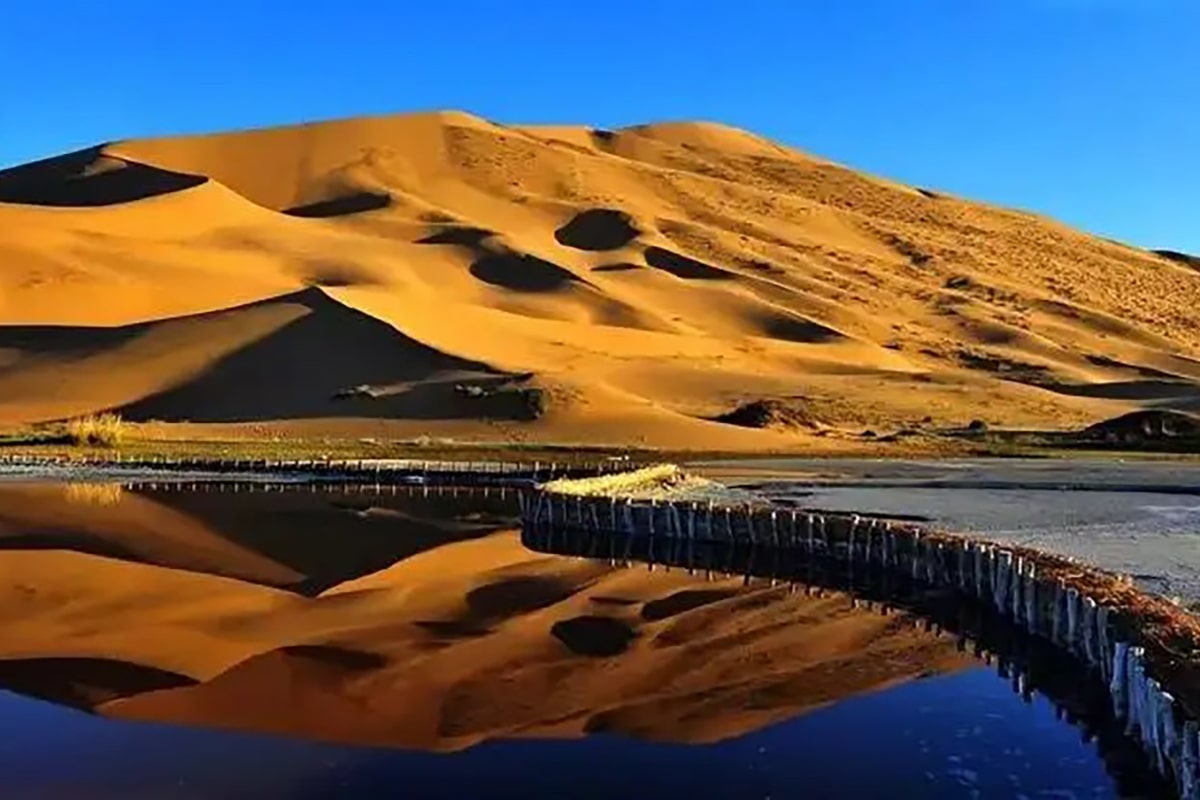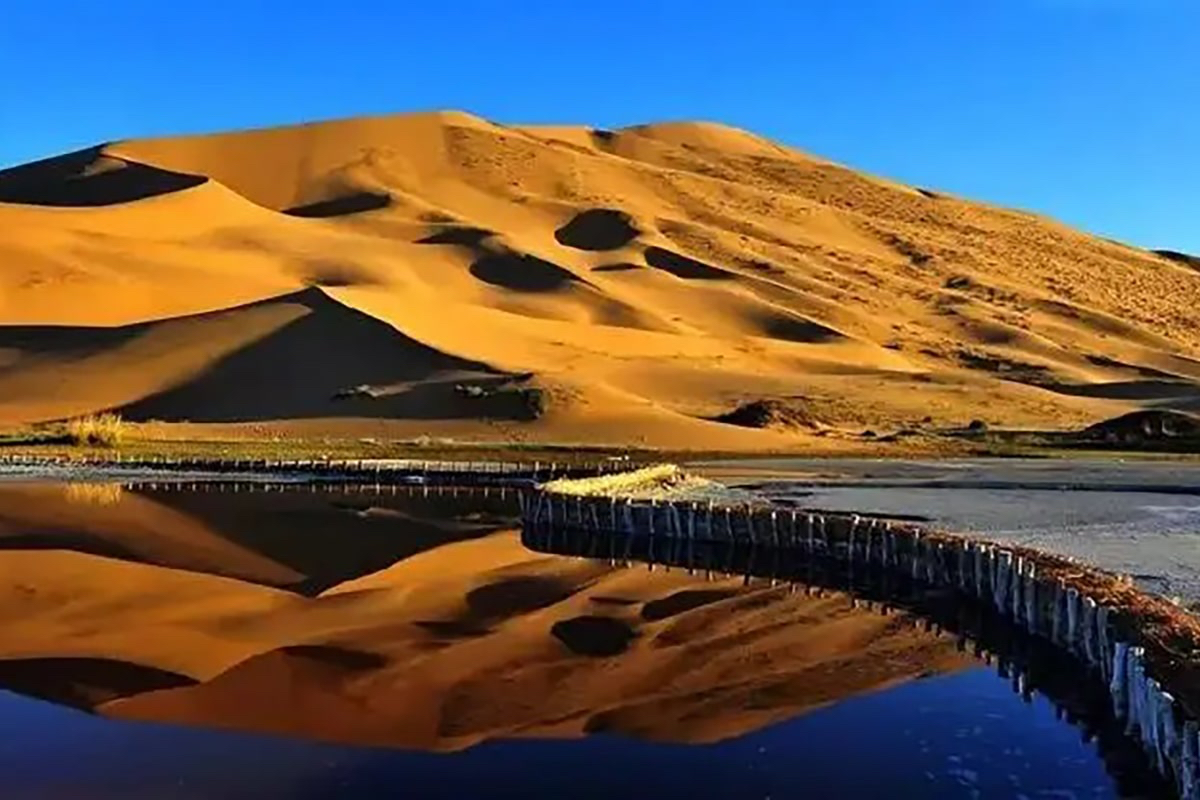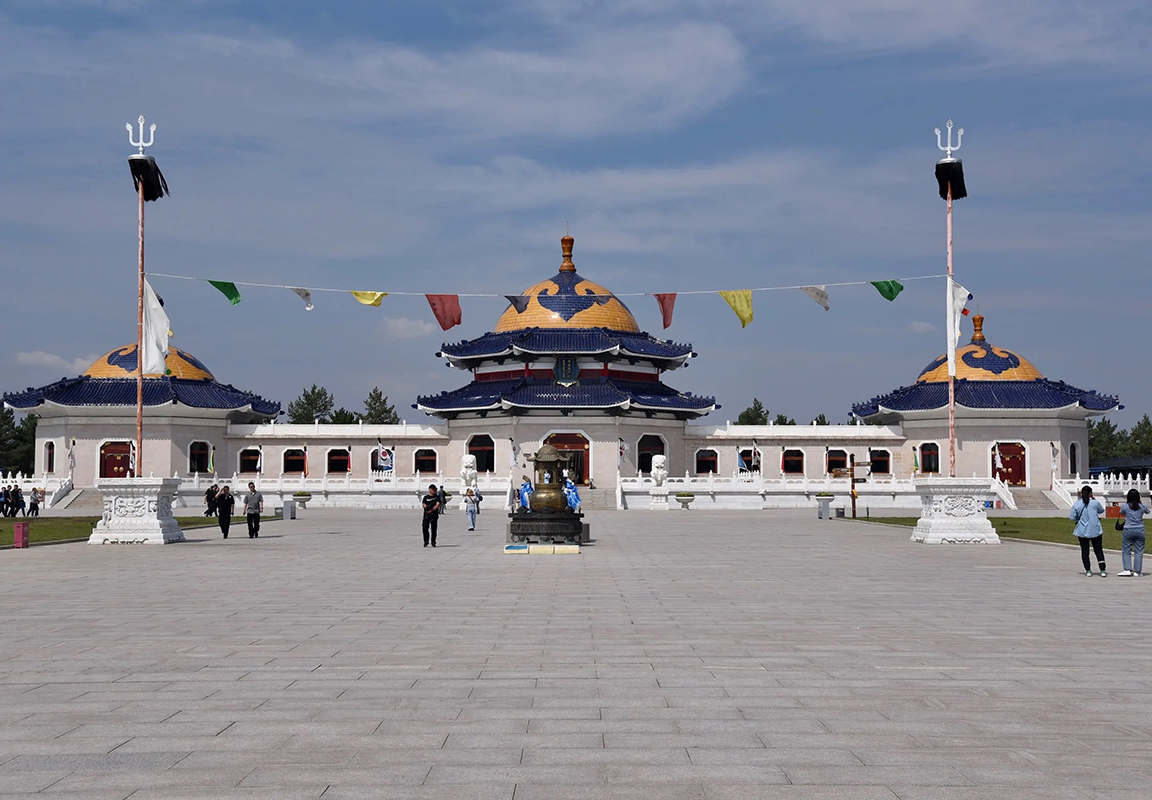Badain Jaran Desert
Chinese name: ba dan ji lin sha mo
Location: north of Alxa Right Banner(a la shan you )
Admission: free
Estimated time of tour: half day
Recommended time of visit: September, October
Nearby attractions: Badain Jaran Temple

This desert land ranks the third largest in China and fourth largest in the world, covering an area of 47,000 square kilometers, almost the size of Denmark. It is located in the south-central part of Inner Mongolia Autonomous Region and the North of the Hexi corridor in Gansu. With picturesque lakes and singing dunes, it is a tourists’ hot-spot and an ideal place for adventurists. The Badain Jaran Desert, like the Tengger Desert which lies east of the Badain Jaran Desert (and with which the Badain Jaran is merging, due to desertification in the area), is roughly one-half barren, sandy desert and one-half a mixture of swatches of solid bedrock, swatches of loose gravel (the latter is often referred to as gobi, hence the name of the larger desert to which the Badain Jaran belongs), and several smallish lakes, around which grows limited vegetation.
Both the Badain Jaran Desert and the Tengger Deserts belong to the bigger Gobi Desert system, which straddles Inner Mongolia and Republic of Mongolia. Like all deserts, some of the sand dunes of the Badain Jaran Desert are constantly shifting.
Known as singing sands, whistling sands, or booming dunes, the dunes of the Badain Jaran Desert make a surprising amount of noise. Singing sands are generated when the desert wind pulls the top layer of sand off layer below. It is believed that the noise is generated by electrostatic charge this action creates. On a small scale, such as a beach, this phenomenon creates a high-pitched sound, but on a much larger scale, it can emit a low-pitched rumble or booming sound, and at up to 105 decibels, it can be quite loud.
Despite of its barren looks, the desert also nurtured human civilizations. The aforementioned Tangut (táng gǔ tè 唐古特) tribes that resided here during China's earliest dynastic period, the Xia (BCE 2000-1500) Dynasty , conducted trade with the Bactrians (BCE 2200-1700) of Central Asia (corresponding to the northern part of present-day Afghanistan, the western part of Tajikistan, most of present-day Turkmenistan, and the southern part of present-day Uzbekistan). The present-day camel of the Badain Jaran Desert is a descendant of the Bactrian camel. This region was then influenced and conquered by later dynasties and tribes, especially the Mongols. The Badain Jaran Desert has a well-preserved Tibetan-Buddhist temple – Badain Jaran Desert Temple, which was built in 1868. Since the temple lies in the heart of the desert, it has remained untouched by the many wars and upheavals.
● Access
To reach this region, the nearest train station is Jinchang (Hexibao station) in Gansu province. Then drive along the He(Hexibao)-Ya(Yabunai) Highway for about 140km. The Base camp is by the side of this road, which provides basics for desert tours. Off roaders or 4X4s are suggested for this route.
- HOTEST
- RECOMMEND

